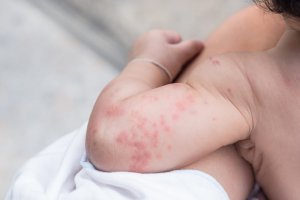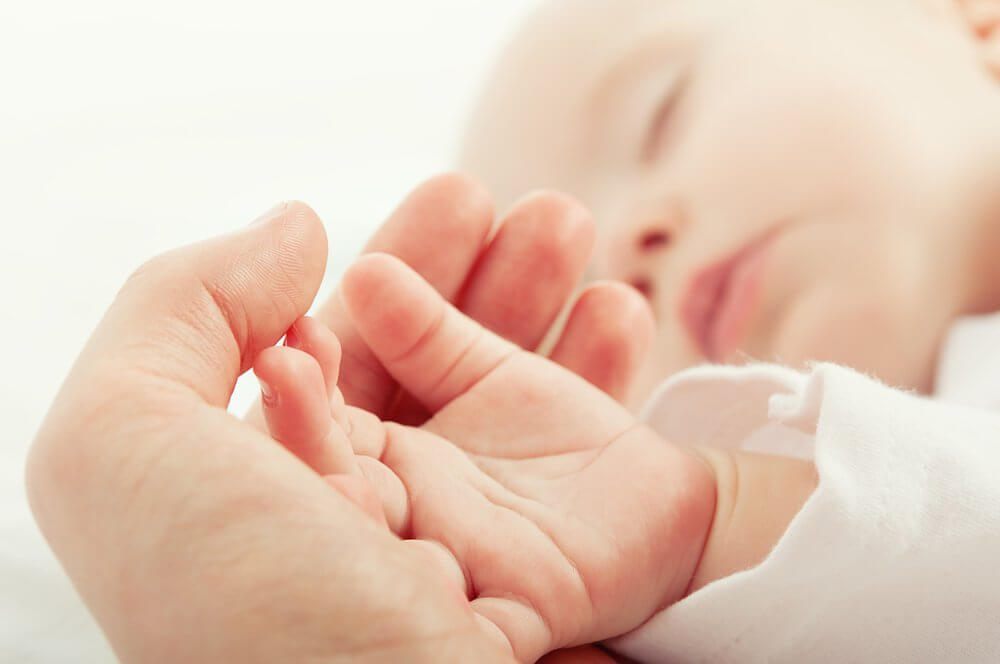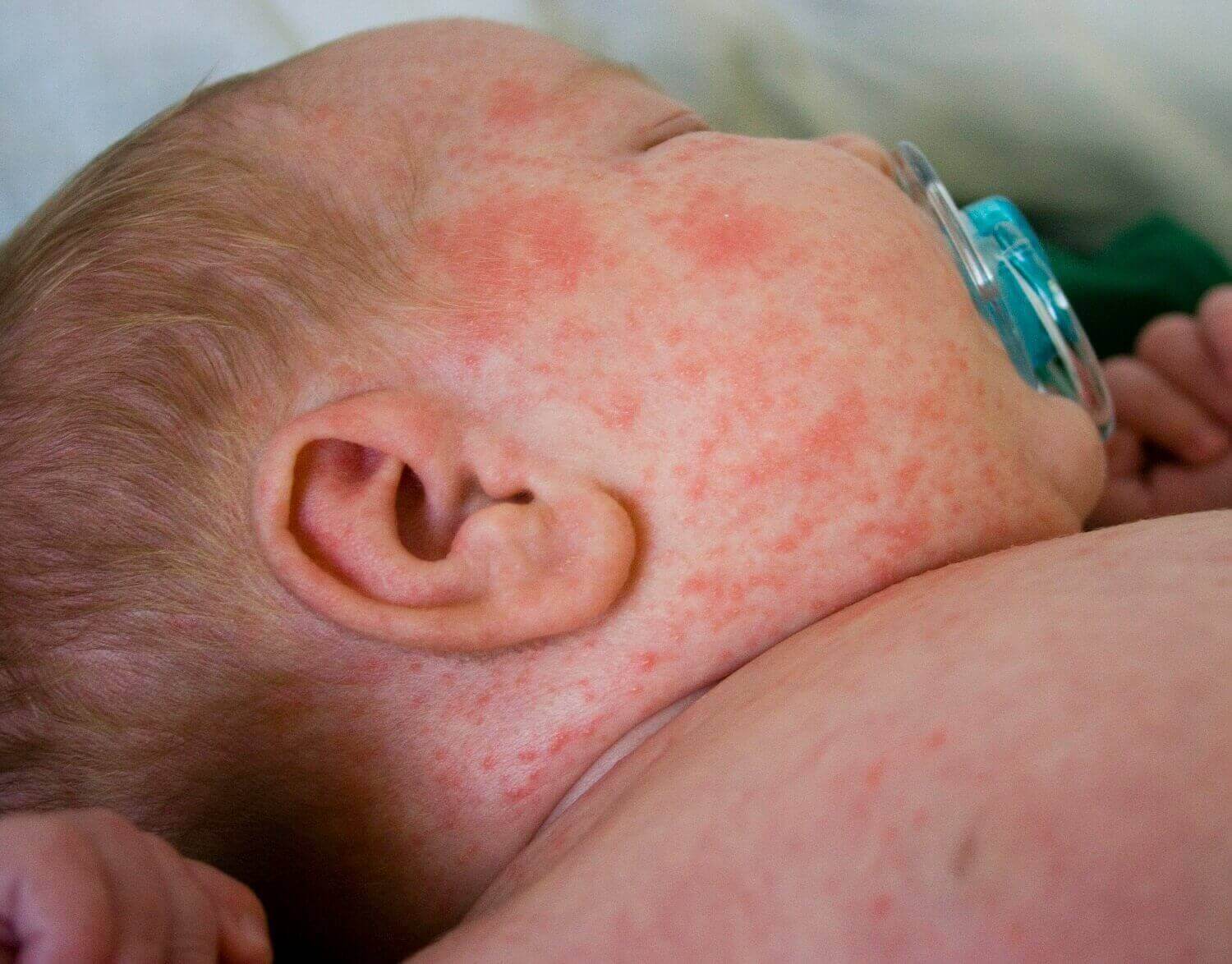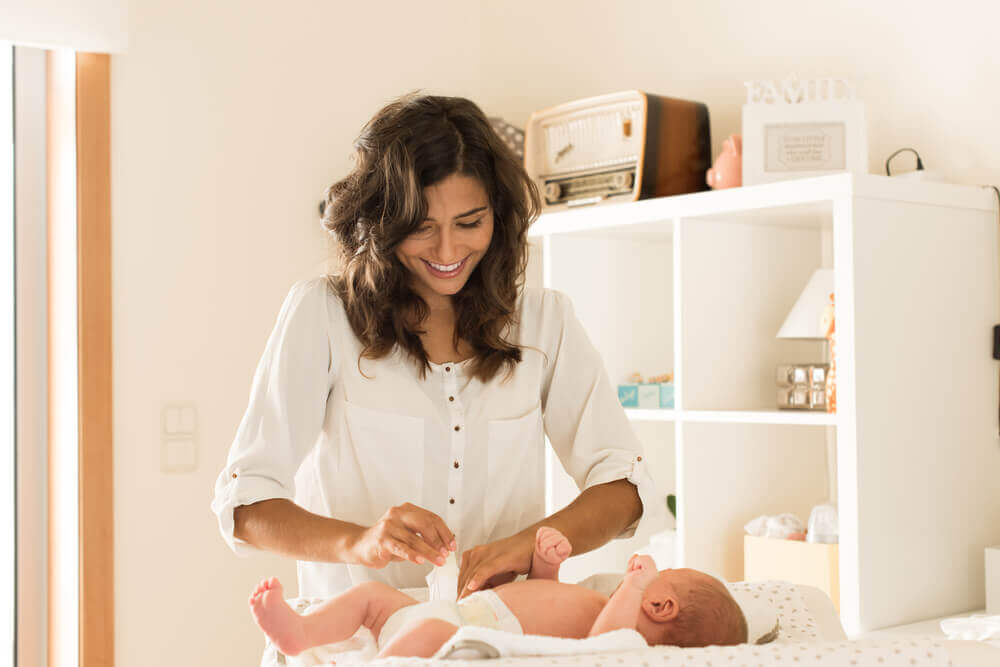What to Do About Heat Rash in Babies: Should I Be Worried?

When you notice your baby has a heat rash, your alarms may go off. However, it’s a mild, temporary skin condition and shouldn’t worry you too much. Another name for it is milaria, or prickly heat.
It’s common in hot, humid climates and often affects newborns, especially babies under a year old. It’s caused by blocked sweat ducts. Because the sweat can’t get out, a rash or little blisters form, which are easily confused with other skin conditions.
So, should you worry about prickly heat?
While it’s good to do certain things to keep your baby comfortable, it’s not a serious condition and doesn’t lead to any other conditions.
Where does prickly heat come from?

Prickly heat is a skin reaction due to a dysfunction of the baby’s sweat ducts. It prevents sweat from leaving the body through their skin, leading to the formation of little red or white pimples or blisters.
It generally forms in areas that tend to get sweaty: the neck, chest, back, etc. However, you may see it in any area. Because of how it looks, some people assume that it comes from poor hygiene.
However, unlike other skin rashes, prickly heat does not come along with fever, and it tends to go away by itself without any treatment. Also, it’s not contagious and doesn’t usually leave marks or scars.
You may also be interested in:
Should You Wake Your Baby to Change Their Diaper?
Risk factors
Babies only a few weeks old are more vulnerable to prickly heat, especially if they live in hot, humid climates. It’s also more common in babies with eczema or dry skin.
Generally speaking, risk factors include:
- Moderate or high fever,
- Excess heat,
- Bacteria (staphylococcus) on the skin,
- Use of pore-clogging powders and lotions.
Symptoms of prickly heat in babies

Most of they time, you’ll see it in areas that contain more sweat ducts, like:
- Skin folds
- The forehead, eyelids, and cheeks
- Your baby’s torso
- The back
- The crotch and thighs
- Underarms and arms
Since prickly heat isn’t an infection, it doesn’t come along with fever. However, since it can be itchy, the baby may seem restless or fussy.
To rule out other problems, see a pediatrician; they’ll be able to find out what it is with a quick physical exam.
Tips to prevent and treat prickly heat in babies
The best way to prevent prickly heat in babies is to keep them from sweating too much. Unfortunately, this may be hard to do in the summer. Therefore, you may want to know how to keep your baby cool when it’s hot out.
Here are some tips:
- Check their diaper often and change it as soon as you notice it’s wet so that heat and moisture don’t stick around for long.
- Cool off your baby in a lukewarm bath, but don’t use irritating soap.
- When you dry them, don’t rub them too much with the towel or the irritation could get worse.
- Dress your baby in light clothes made of breathable fabrics or cotton.
- Keep them out of the sun and be careful when you go outside.
- Feel your baby’s skin several times a day to check for heat or sweat.
- Make a compress with water, baking soda, and either gauze or a soft cloth. Apply it to the affected areas.
- Don’t bundle your baby up, especially when it’s warm out.

How can I treat prickly heat in babies?
When you see the little bumps of prickly heat, you’ll want to do something about it. However, pediatricians often just advise normal hygiene, since it goes away in 2 or 3 days.
If your baby seems very uncomfortable because of it, or if they get heat rash often, the doctor may suggest using a cortisone lotion. Other natural solutions are a chamomile bath or applying aloe vera.
Read this article as well:
Four First-Time Mom Mistakes to Avoid
To sum up…
Heat rash is a mild condition and is not dangerous for your baby. However, since the symptoms can be bothersome to them, it’s a good idea to know how to relieve the discomfort.
All cited sources were thoroughly reviewed by our team to ensure their quality, reliability, currency, and validity. The bibliography of this article was considered reliable and of academic or scientific accuracy.
- Guerra KC, Toncar A, Krishnamurthy K. Miliaria. [Updated 2020 Aug 13]. In: StatPearls [Internet]. Treasure Island (FL): StatPearls Publishing; 2020 Jan-. Available from: https://www.ncbi.nlm.nih.gov/books/NBK537176/
- O’Connor NR, McLaughlin MR, Ham P. Newborn skin: Part I. Common rashes. Am Fam Physician. 2008;77(1):47-52.
- Cabrera-Meza, G. 12 DERMATOLOGÍA NEONATAL Y AIEPI: AVANCES DE UNA PROPUESTA. GRUPO ASESOR TÉCNICO AIEPI (GATA), 51. https://www.paho.org/es/file/46976/download?token=xJb82urn#page=57
- Rodríguez Camelo, G., Tijerina Torres, C., Rodríguez Balderrama, I., & Rodríguez Bonito, R. (2009). Miliaria congénita: informe de un caso en recién nacido prematuro. Medicina Universitaria, 11(45), 267-269. http://eprints.uanl.mx/8558/1/Miliaria%20congenita.pdf
- Bautista, C. R., & Llop, F. M. (2007). Recién nacido: lesiones cutáneas benignas transitorias. In Protocolos de dermatología(pp. 309-316). AEP Madrid. http://www.enfermeriaaps.com/portal/download/DERMATOLOGIA/rn_benignastransitorias_0.pdf
-
Sathishkumar D, Moss C. Topical Therapy in Atopic Dermatitis in Children. Indian J Dermatol. 2016;61(6):656-661. doi:10.4103/0019-5154.193677
-
Fowler JF, Nebus J, Wallo W, Eichenfield LF. Colloidal oatmeal formulations as adjunct treatments in atopic dermatitis. J Drugs Dermatol. 2012;11(7):804-807.
This text is provided for informational purposes only and does not replace consultation with a professional. If in doubt, consult your specialist.








